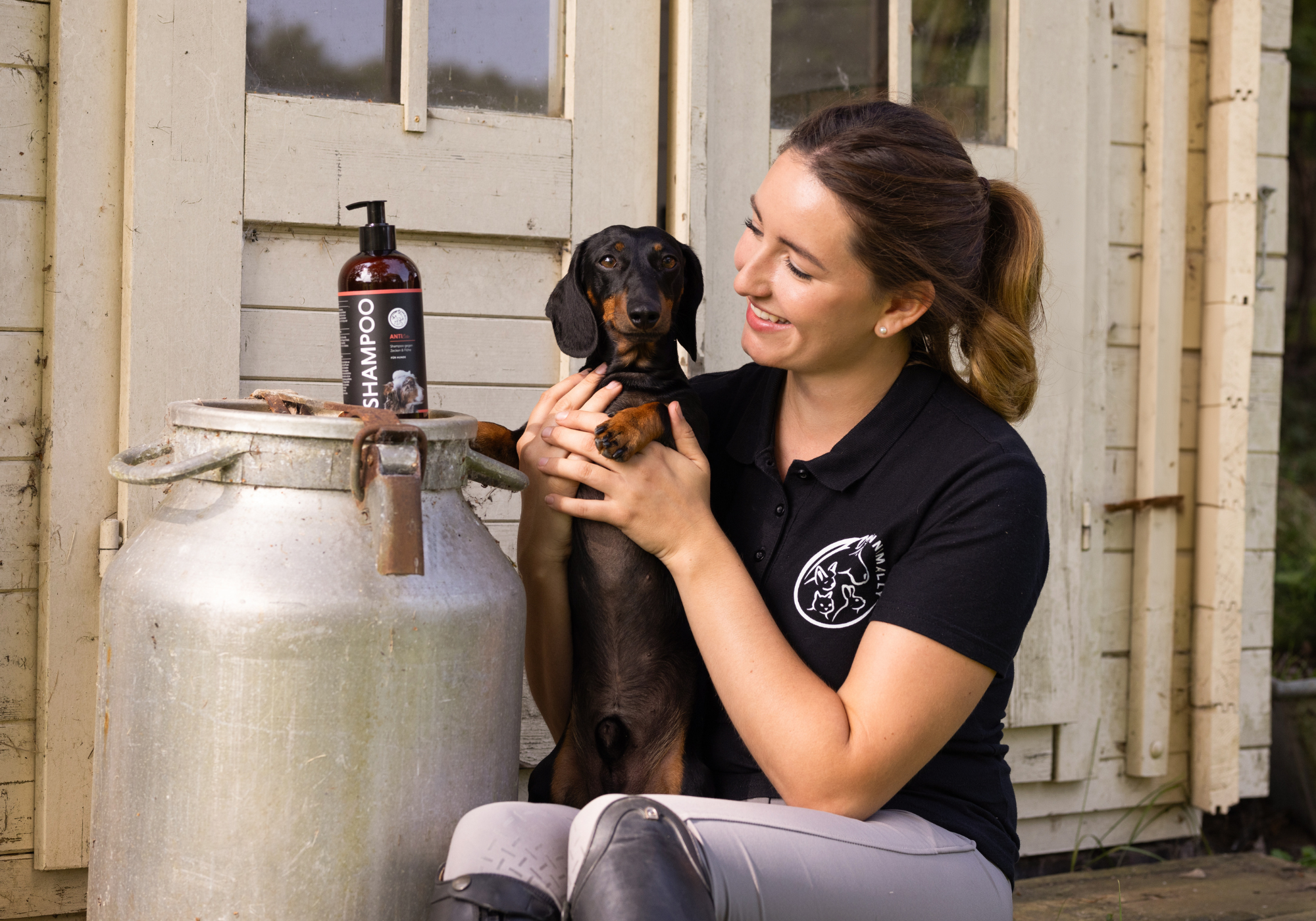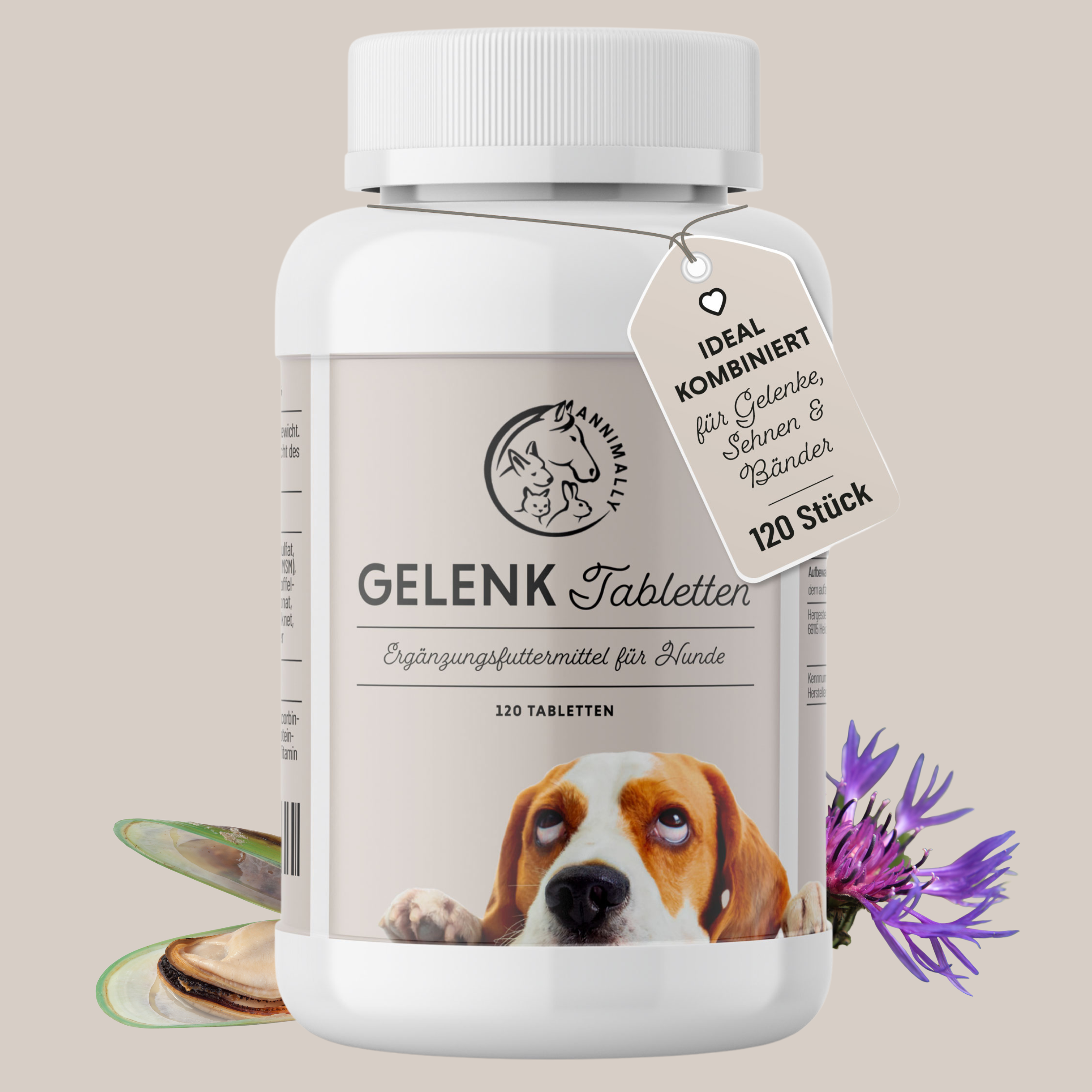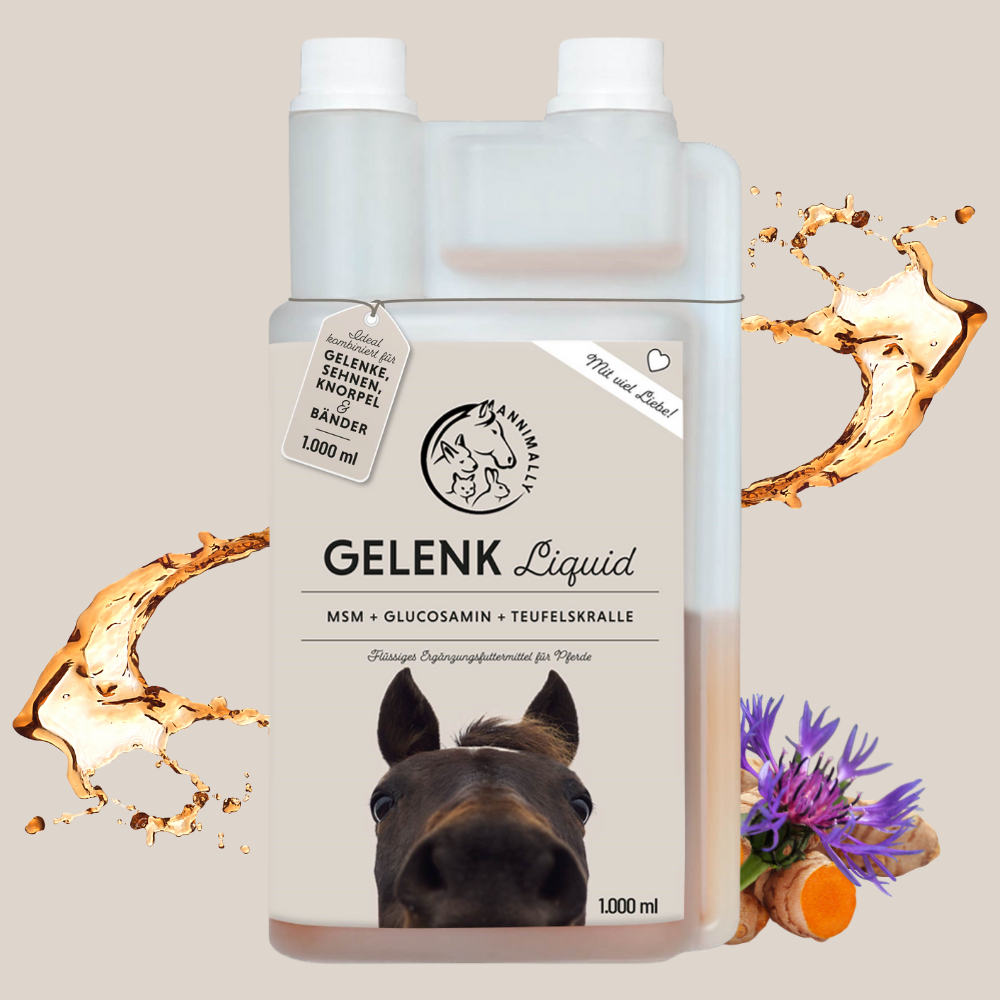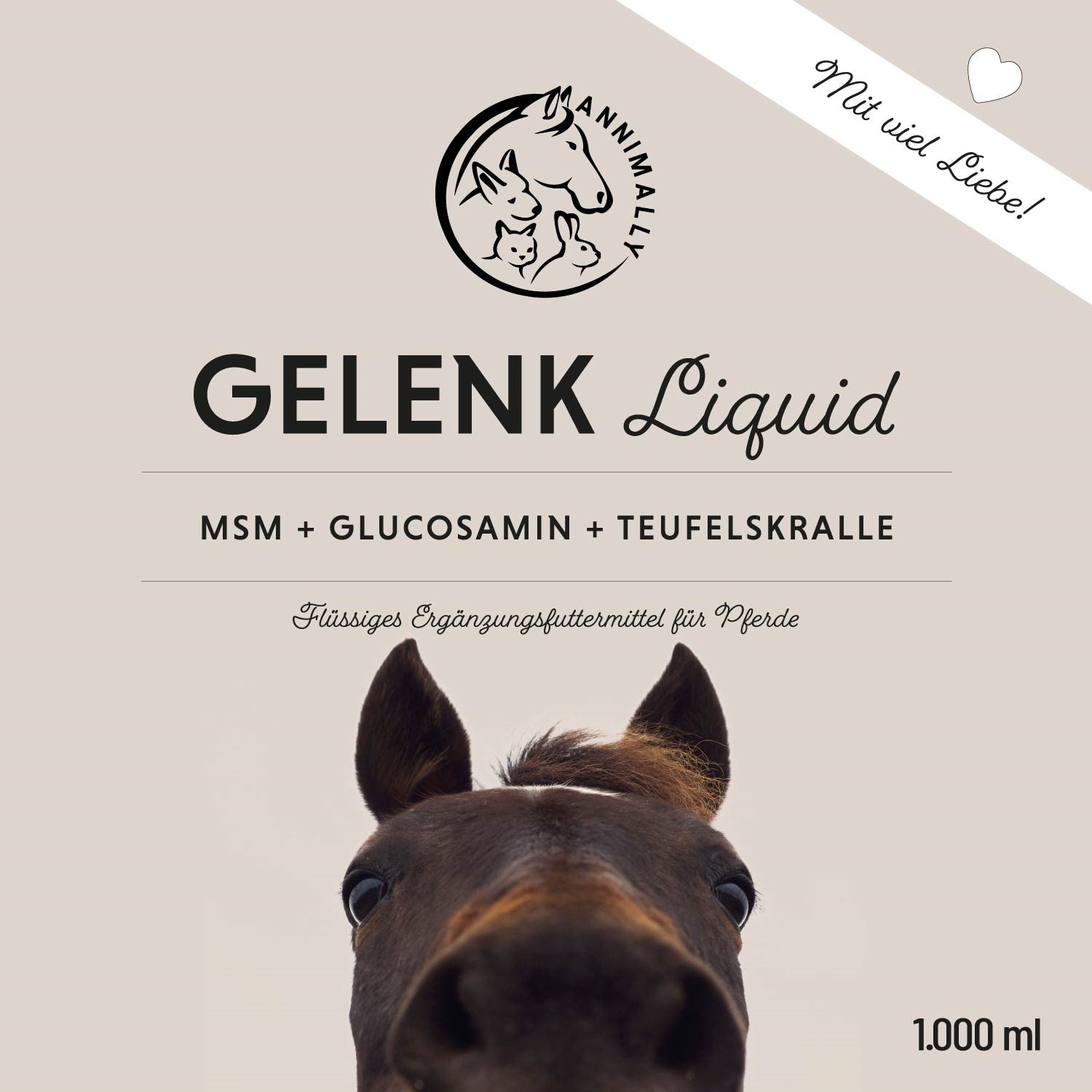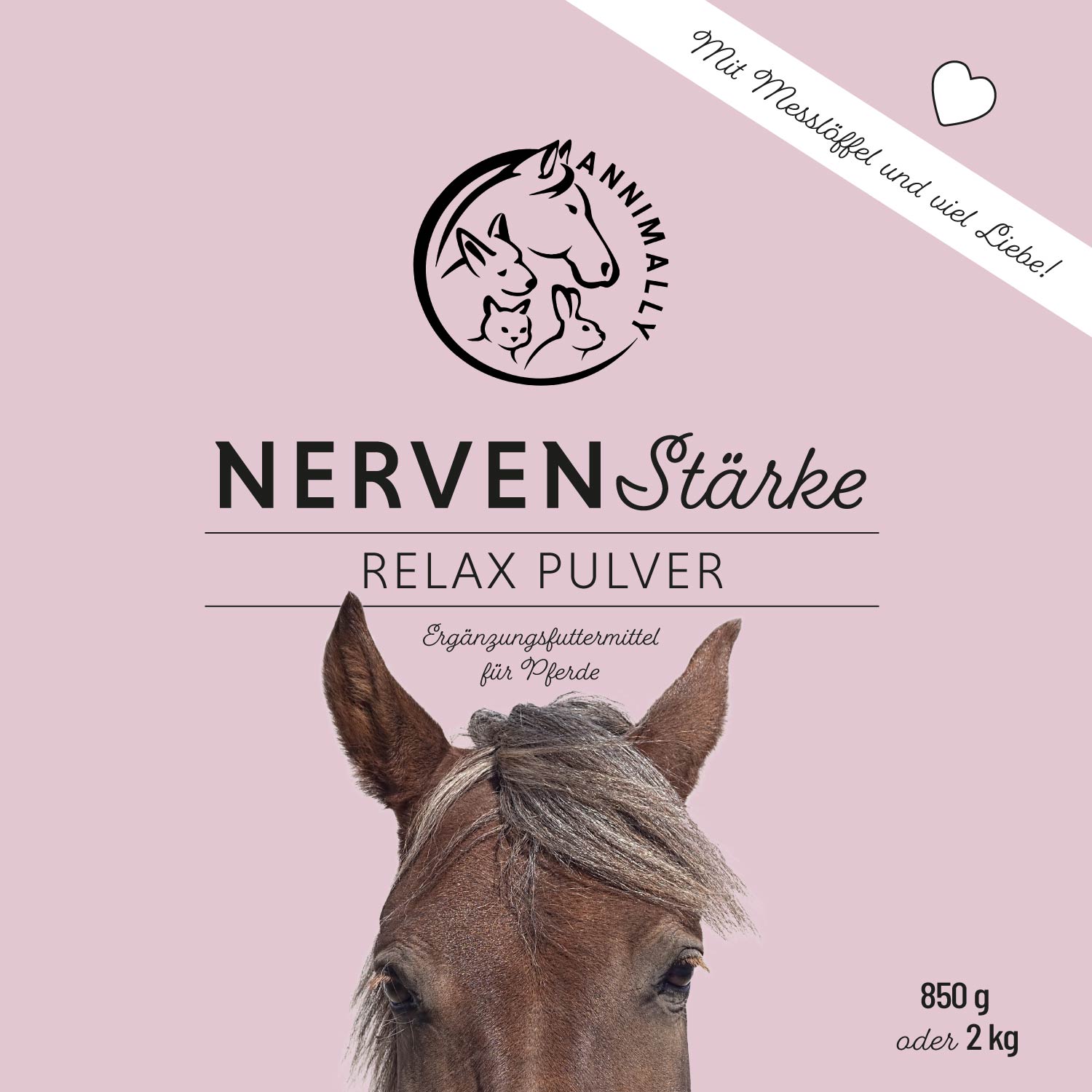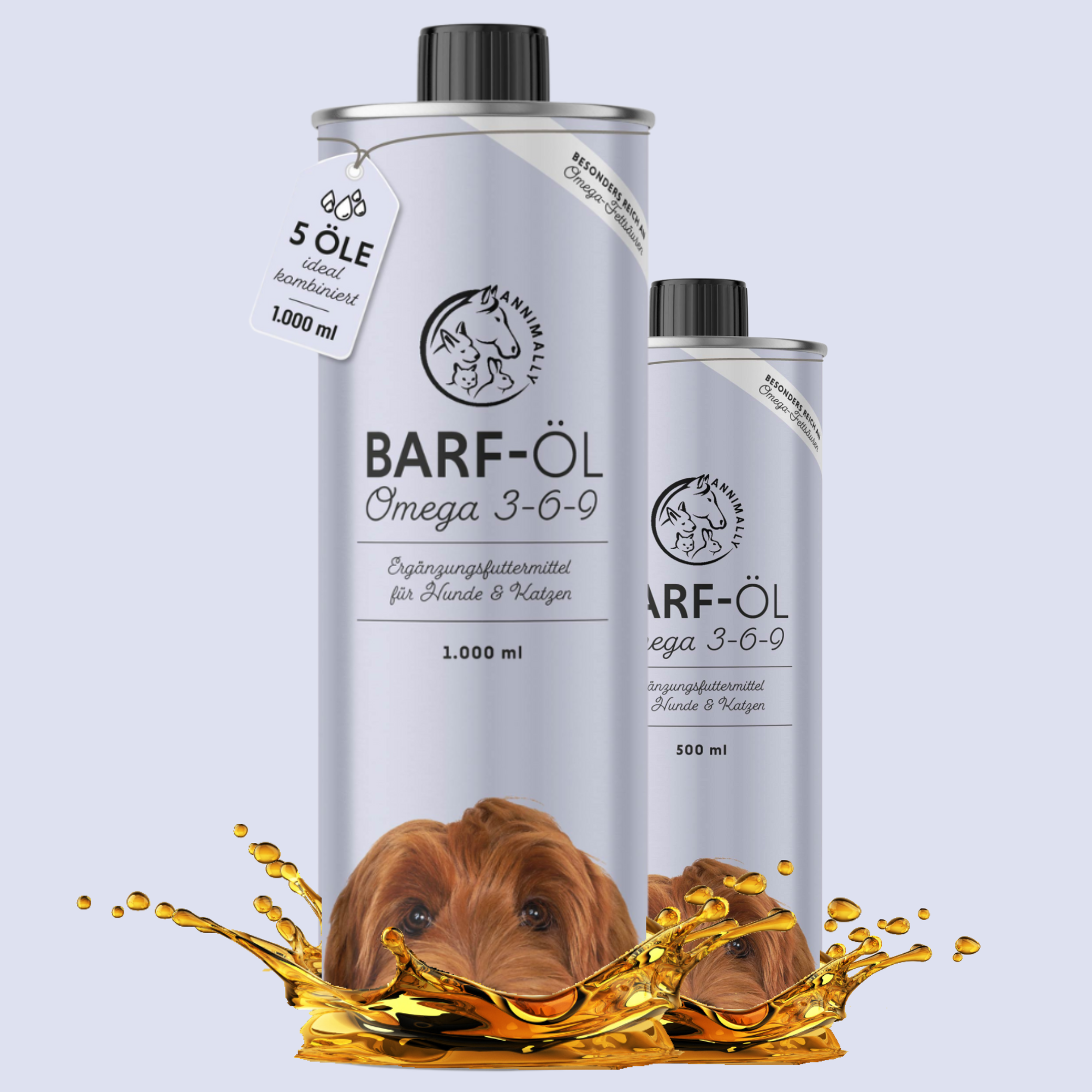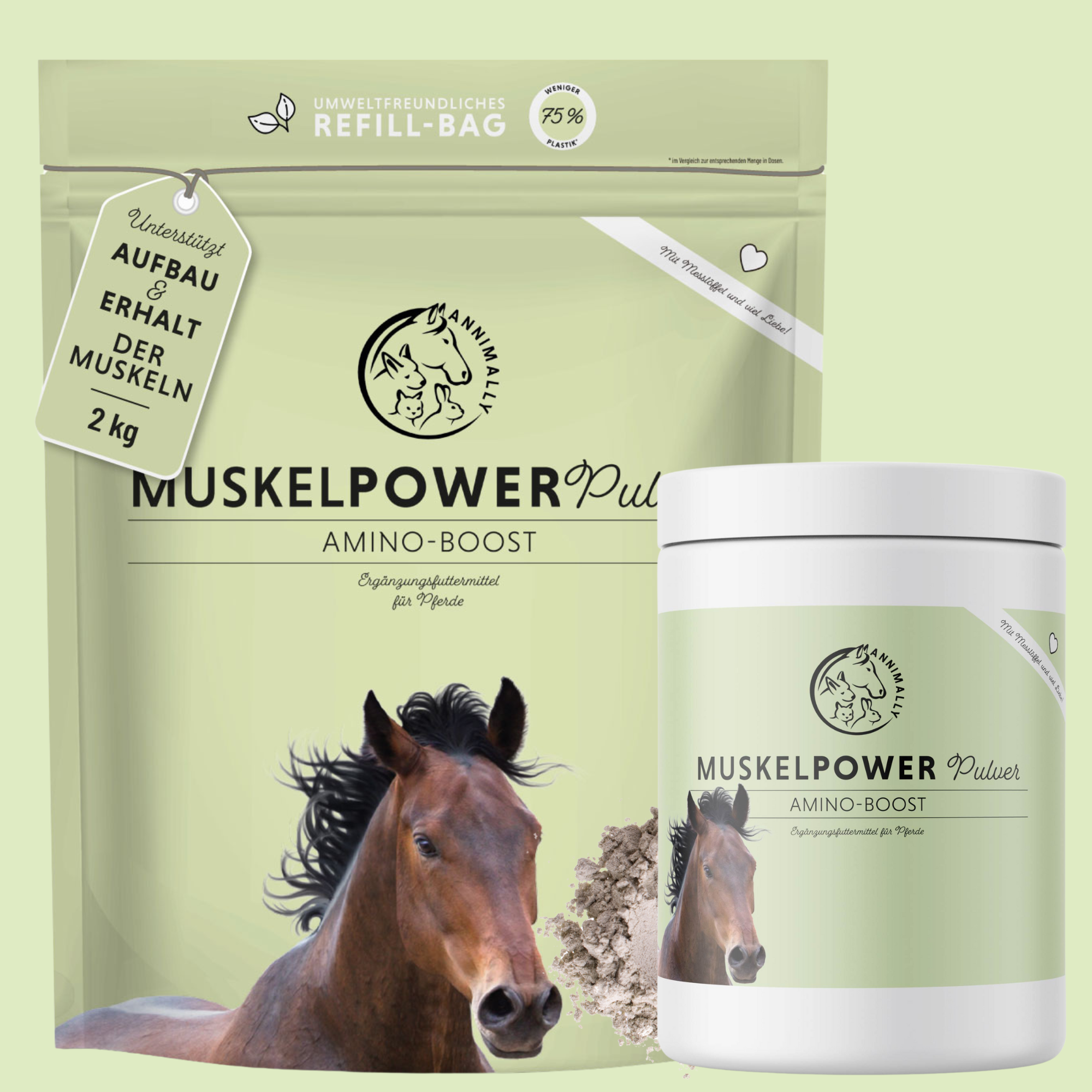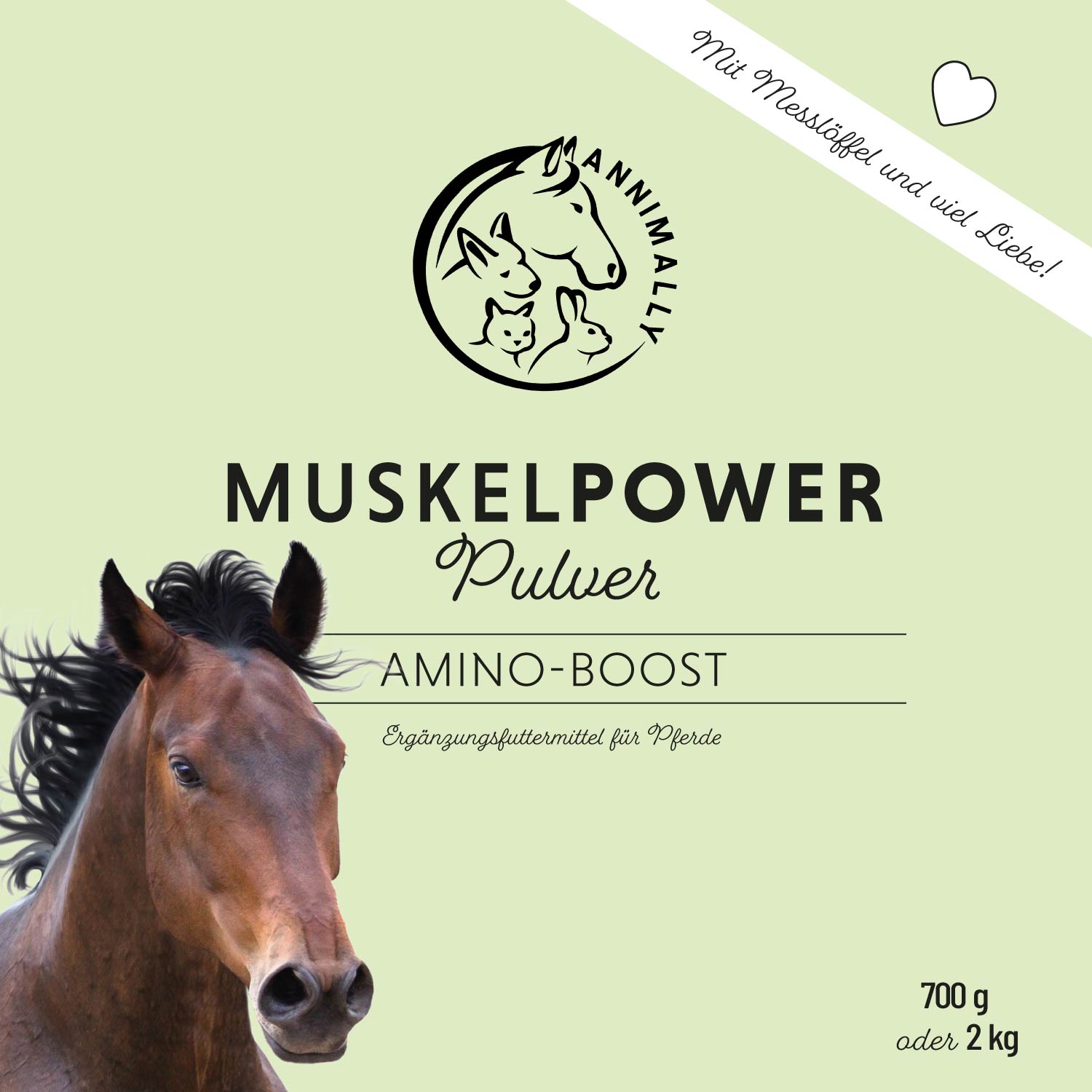
PSSM in horses – What is behind the muscle disease polysaccharide storage myopathy?
You're reading this article because you're concerned about PSSM in horses, also known as polysaccharide storage myopathy. Perhaps you've noticed muscle tremors, stiff movements, muscle pain in your horse, or have heard about genetic testing that can differentiate between variants such as PSSM type 1 and type 2.
In this article, you will learn in detail – and in an understandable way – what lies behind this muscle disease in horses, what the typical symptoms are, what diagnosis, treatment and therapy look like – and how you can help your horse.

What is PSSM in horses?
PSSM – the abbreviation stands for polysaccharide storage myopathy. It is a genetically determined muscular metabolic disorder in which sugar (glycogen or polysaccharides) is abnormally stored and processed in your horse's muscle cells. Instead of being converted into normal energy, the polysaccharides accumulate in the skeletal muscles, leading to muscle problems and increased discomfort.
There are two variants: PSSM type 1 and PSSM type 2, in which the exact genetic defect is usually unknown.
Causes & Variants: PSSM 1 and PSSM 2
PSSM Type 1
PSSM type 1 is caused by a genetic mutation in the GYS1 gene, which encodes the enzyme glycogen synthase 1. This enzyme regulates the formation and storage of glycogen, or stored sugar, in muscle cells. This mutation results in excessive glycogen being stored in muscle cells—far more than the muscle needs or can process for energy production. The excess glycogen disrupts normal muscle metabolism and leads to typical symptoms such as muscle stiffness, pain, or decreased performance.
This form is particularly common in Quarter Horses, Paint Horses, and some warmblood breeds. A genetic test—the so-called GYS1 test—can reliably detect the mutation. Depending on whether the horse has one (heterozygous) or two (homozygous) altered gene copies, the severity of the symptoms can vary. Horses with a homozygous mutation are usually more severely affected and require more consistent management.
PSSM Type 2
In contrast to type 1, PSSM type 2 does not have a GYS1 mutation. The causes of this variant are not yet fully understood, but the symptoms are sometimes very similar to those of type 1. Therefore, type 2 was initially designated as a diagnosis of exclusion—that is, a form of PSSM in horses with typical symptoms but a negative GYS1 test result.
Today, we know that type 2 is likely comprised of several subtypes collectively known as muscle integrity myopathies (MIM). These affect less sugar storage per se, but rather other aspects of muscle structure and function. Diagnosis of type 2 requires a muscle biopsy, in which muscle tissue is removed and examined for pathological changes.
Type 2 can occur in many breeds, even in horses not typically at risk, including warmbloods, ponies, and Arabians. Affected animals often exhibit symptoms such as stiff movements, muscle tremors, rapid fatigue, or back pain, which are associated with impaired muscle metabolism.
Mixed forms & variants of PSSM in horses
In some cases, mixed forms of PSSM1 and PSSM2 occur – i.e. horses that carry both a GYS1 mutation and show abnormalities typical of type 2.
In addition, there are other genetic variants associated with muscle problems. These are designated P2, P3, P4, and P8 and have become known primarily in connection with MIM research. Although they are not yet officially classified as PSSM types, they provide evidence that the range of genetically determined muscle metabolism disorders in horses is wider than previously thought.
Research into this is still ongoing, but these variants are already being tested by specialized laboratories – especially in horses with typical symptoms but unclear findings. This demonstrates how complex the topic of PSSM truly is and how important it is to consider more than just a single cause when a muscle disease is suspected.
How does the problem of PSSM arise in horses?
In horses with PSSM, the muscles store excessive amounts of glycogen – sugar molecules that normally serve as an energy source. However, in this disease, muscle metabolism is disrupted. The body lacks the right enzymes to properly process the stored glycogen. This so-called storage myopathy causes the sugar to be stored in the muscle cells not only in excessive amounts but also in the wrong form.
This puts strain on the muscle structure and, in the long term, damages muscle integrity. Warmblood breeds are particularly frequently affected, as they are often genetically bred for high performance, which can increase a certain susceptibility to metabolic disorders such as PSSM.
Symptoms & typical complaints
In a horse with PSSM, you can look out for the following symptoms:
-
Muscle tremors , especially after exertion
-
stiffness at a walk or trot
-
Muscle loss or visible atrophy in the skeletal muscles
-
Muscle pain , sensitivity to touch
-
Heavy sweating , often even during light work
-
Possible lameness if the muscles are extremely damaged
-
General malaise , reduced performance
-
Weight loss or Problem with feeding if the muscles suffer chronically
PSSM is sometimes falsely portrayed as a fad—or perhaps a trendy diagnosis. But PSSM1 and PSSM2 are real diseases with a biological basis.
Which horse breeds are affected?
PSSM can occur in many horses, but certain breeds are significantly more frequently affected than others. The disease is particularly common in Quarter Horses, Paint Horses, and Appaloosas—all closely related breeds in which the genetic predisposition to the GYS1 mutation (PSSM type 1) is highly prevalent. Warmblood breeds bred for sport, such as Hanoverians, Holsteiners, and Oldenburgs, also increasingly show symptoms of PSSM type 2. In these horses, the primary cause is usually not excessive glycogen storage, but rather structural or functional weaknesses in the muscle tissue.
But not only athletic horses are affected – cold-blooded breeds such as Norikers and Belgians can also develop PSSM, especially type 1. Since these breeds were originally bred as working horses, high muscle mass was desirable – and with it, apparently, an increased risk of impaired glycogen storage. Even ponies, Arabians, Icelandic horses, and other small horse breeds are not entirely exempt, although they are diagnosed less frequently overall.
What's particularly insidious is that PSSM often goes undetected for a long time because the symptoms are unclear or are mistakenly interpreted as a lack of training, stubbornness, or "bitchy" behavior on the part of the horse. Genetic predisposition plays a crucial role here – even with the same husbandry and feeding, horses of a certain line can be significantly more susceptible than others.
Therefore, it's important not only to pay attention to symptoms, but also to consider preventative genetic testing for horses of affected breeds. This allows for early detection of any genetic predisposition – allowing you to tailor housing, feeding, and training accordingly.
Diagnostics: Genetic testing & muscle biopsy in horses
To diagnose PSSM type 1, a simple A genetic test performed either via a blood sample or a hair sample with a root. This test can definitively detect the GYS1 mutation. If the result is homozygous—meaning both gene copies are affected—there is a high risk of severe symptoms. If the result is heterozygous, the horse generally exhibits milder forms of the disease. A negative result rules out PSSM type 1.
If PSSM, especially type 2, is suspected despite a negative genetic test, in many cases a Muscle biopsy . A small tissue sample is taken and analyzed in the laboratory. If the sample shows excessive storage of glycogen or insoluble polysaccharides in the muscle cells, this indicates PSSM type 2 or related variants such as MIM (muscle integrity myopathies). Muscle biopsy is currently the most reliable method for diagnosing PSSM type 2, even though it is somewhat more invasive than genetic testing.

Why is PSSM not a “normal muscle twitch”?
Not to be confused with muscle soreness: In PSSM, polysaccharides are stored incorrectly in the muscles – a metabolic dysfunction that can lead to muscle damage, inflammation, decreased performance, or chronic pain over the long term. Skeletal muscles suffer lasting damage if you don't take action.
Therapy & Management: What can you do?
Nutrition & feeding your horse
-
Reduced sugar content (e.g. avoid lightly crushed oats, beet pulp).
-
High fat content, such as oil or linseed, provides alternative energy sources.
-
Keep the feeding routine as consistent as possible, without sudden changes.
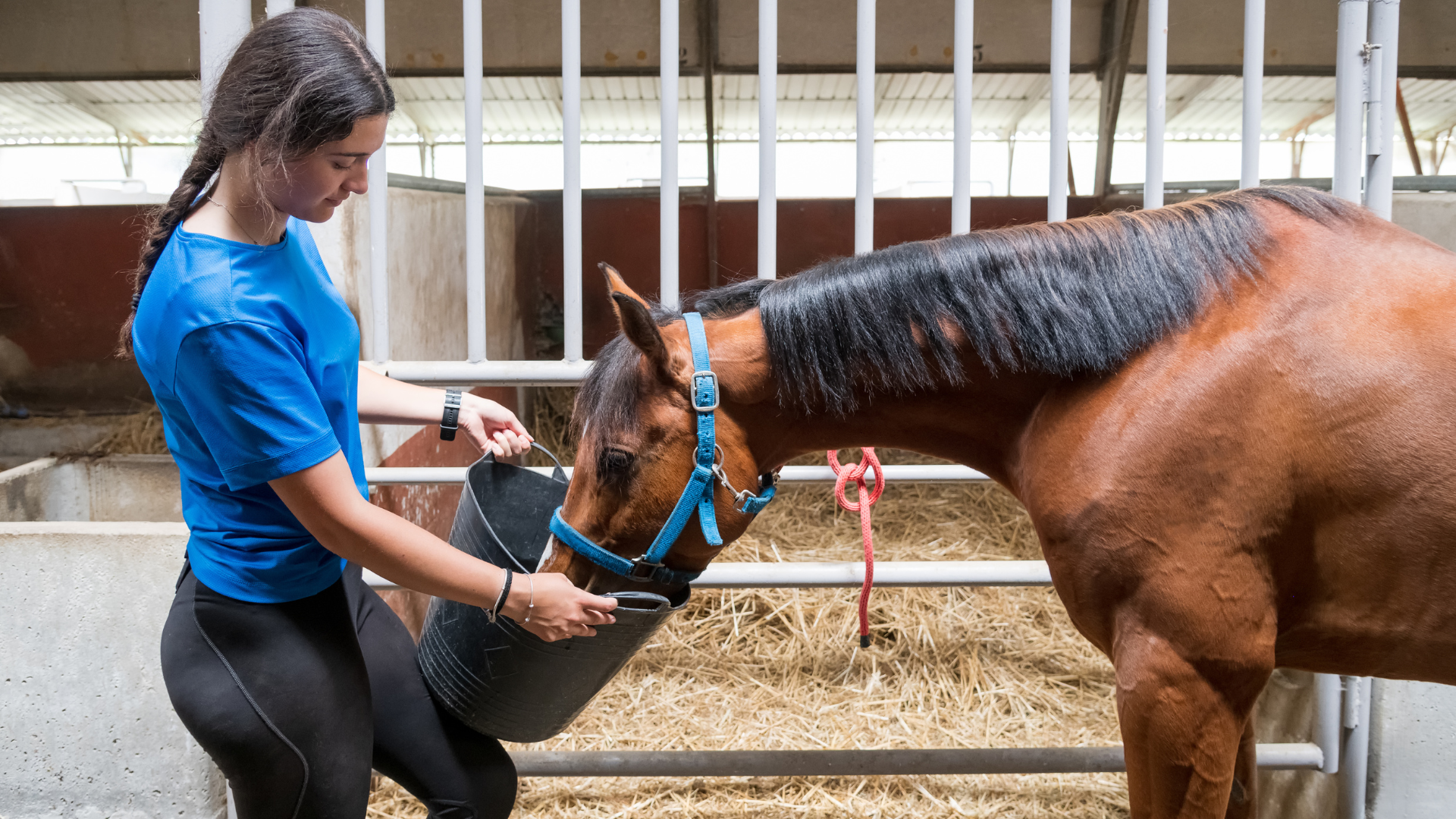
Posture & Movement
-
Daily exercise, ideally at a steady, calm pace.
-
No long boxing camp, especially not when you have acute muscle tremors.
-
Sufficient grazing, restraint in the horse world if necessary, but regular short walks.
Medications & supportive care
-
In acute cases, relief medication (e.g. anti-inflammatory drugs after consultation with a veterinarian).
-
Supplements such as Vitamin E/Selen to support muscle metabolism.
-
No miracle solution – management through diet and exercise is crucial.
Training & Regeneration
-
Gentle rehabilitation programs, adapted to resilience.
-
As even a load as possible – no sudden peaks in load.
-
Phased muscle building, e.g. with uphill exercises or lunging.
Recognizing symptoms in everyday life: Step by step
Take a close look at your horse:
-
When halting or riding, observe whether the horse trembles or sweats when mounting or walking.
-
Pay attention to stiffness in the morning or after breaks – this could be an indication of muscle strain.
-
Regularly check muscle strength and shape – is there any atrophy or uneven muscle patterns?
-
Keep a log of growth or performance improvements – what are the changes?
-
Note any signs of lameness, weakness, fatigue, or pain.
Tips for you & your horse with PSSM
-
Get a genetic test if you suspect a possible genetic predisposition.
-
If PSSM1 is negative and symptoms persist, consider muscle biopsy.
-
Focus on low-sugar, high-fat feeding, with consistency.
-
Exercise your horse daily in quiet walking phases and avoid long periods of rest in the stable.
-
Talk to a horse veterinarian or feeding expert – tailored to your individual needs.
-
Keep a symptom diary (sweating, trembling, lameness log).
-
Snack smart: Treats with low starch/sugar content.
-
Consider supplements like vitamin E and selenium if appropriate.
-
Give your horse time to regenerate now and avoid high performance.
-
If possible, network with people affected by this issue in the horse world – experience helps.
Outlook & classification in the horse world
PSSM is not a fad. It is a genetically inherited muscle disease that should be taken seriously – easily testable in PSSM type 1, but often more difficult in type 2. In the horse world, awareness is growing – among breeders, owners, and veterinarians alike – for education and guidance in dealing with PSSM.
With proper management, appropriate training, and feeding, you can help your horse live a trouble-free life and perform without pain, muscle loss, or stiffness.
Summary of PSSM in horses – short & concise
PSSM in horses is a serious muscle disease that permanently disrupts muscle metabolism. It occurs in two main forms: PSSM type 1, triggered by a genetic mutation in the GYS1 gene, and PSSM type 2, the causes of which are not yet fully understood but are related to structural problems in the muscles.
Both variants result in the improper utilization of sugar—in the form of glycogen—which overloads muscle cells and leads to pain, stiffness, muscle weakness, or decreased performance. Quarter Horses, Paint Horses, and warmblood breeds are particularly commonly affected, but other horses can also become ill.
Diagnosis is made through a genetic test for type 1 or a muscle biopsy if type 2 is suspected. However, with proper husbandry, appropriate feeding, targeted training and consistent management, horses with PSSM can often lead a largely symptom-free life.
It is crucial that you, as a horse owner, recognize the symptoms, do not underestimate them, and act early – this way you can give your horse an active and worthwhile life.

